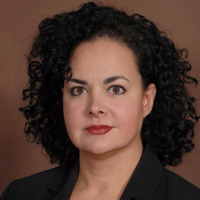
It is currently a crime in Canada for a doctor to end the life of a person who no longer wishes to live because of mental illness. This is set to change in March 2024, when amendments to Canada’s medical assistance in dying (MAiD) law are to take effect. At that point, mental illness may qualify as a “grievous and irremediable medical condition” and create eligibility for assisted death.
Members of Parliament, in a close vote, recently rejected a bill to reverse this expansion. They did, however, ask a special committee to assess Canada’s readiness for it. Final recommendations are due January 31, 2024.
There has been some confusion on this issue, including a belief that the Supreme Court has required Parliament to introduce psychiatric MAiD. As more than 30 law professors recently explained in an open letter, this is not accurate. Expanding MAiD for mental illness is currently a policy decision of legislators, not a court-mandated constitutional directive.
The line between MAiD and suicide
Many Canadians, suicide prevention organizations, disability advocates and health professionals have voiced reservations on expanding MAiD to include psychiatric disorders. One concern is that offering MAiD for mental illness – especially if there are indications of suicidality – could transform psychiatry’s approach from suicide prevention to suicide assistance. As the Canadian Association for Suicide Prevention observed, MAiD for “someone who is not dying as a result of their condition, such as a mental disorder alone” is, by definition, suicide.
Such concerns have not convinced those who maintain that suicide and MAiD are distinct. The originating premise for this appears to be that MAiD is based on a considered, rational and persistent desire to die. By comparison, suicide is perceived as an impulsive act.
But suicidal ideation in persons with mental illness can also be persistent and longstanding. Even former justice minister David Lametti, when pressed, conceded that MAiD is “a species of suicide.”
This is the crux of the matter. MAiD is viewed as rational not because it is necessarily distinct from suicide, but because Canadian law and policymakers have agreed a desire to die in certain circumstances is understandable. And, therefore, it is appropriate for the state to facilitate.
This distinction is based not on any empirical authority, but on a moral and relativist judgment. This judgement is one that scribbles a line between suicides which are illegal to assist and those which are state-assisted. And that line is based on disability.
According to the law, access to state-assisted death is never permissible for people who are mentally and physically healthy – even those with a considered and persistent desire to die. But for the class of persons with a “grievous and irremediable” disability – soon to include mental illnesses – a desire to die is reflected back as understandable to the extent that it merits a “compassionate” life-ending response by the state. This life-ending response is publicly funded and delivered through the healthcare system.
Insufficient safeguards
Many who support expansion argue that adequate safeguards are in place to address any concerns. For example, last year Canada’s health minister at the time insisted on X (formerly Twitter) that “suicidal people are NOT eligible for MAiD and instead offered supports.”
But supports are often not available, and even if they were, under the current MAiD law, a person would not need to fully explore them before having their life ended through MAiD. There is no explicit legislative requirement that patients be specifically screened for suicidality.
The reality is that Canada’s law is not designed to protect death-seeking people from eligibility for MAiD. After all, by definition, MAiD is premised on a desire to die. Existing safeguards do not address concerns about the ableist messaging of Canada’s MAiD regime. This is despite early government awareness of the need to “avoid encouraging negative perceptions of the quality of life of people who are elderly, ill or disabled.”
The re-convergence of MAiD and suicide came into sharp focus amid a troubling report that a woman seeking help for suicidal ideation at a Vancouver hospital was asked if she had considered MAiD. The patient said she felt “shocked” and “sickened” by the exchange, and that the clinician went so far as to describe MAiD as a more “comfortable” process compared to other forms of suicide.
The hospital maintained that the question was not an offer of MAiD but a diagnostic tool to evaluate suicidality. However, this was not necessarily an isolated incident and warrants further reflection.
First, what a clinician might intend to communicate about MAiD can come across very differently to a patient. MAiD is unlike any other procedure offered in Canada’s healthcare system. It involves the intentional termination of human life and is “obviously irreversible, and heavy in consequences.”
It is therefore subject to detailed Criminal Code safeguards and can only be provided when a patient “voluntarily requests” it, is free from “external pressure,” and provides “informed consent.”
There is a grave risk if a clinician initiates the conversation, unsolicited – regardless of intention. This is because of the power imbalance that exists between patients and medical practitioners.
From a disability inclusion perspective, how could the initiation of a MAiD conversation by a doctor or nurse ever be neutral? And how could calling mental illness “irremediable” not convey the message that there is no hope of recovery?
Missing the mark on a profound social change with MAiD for mental illness
A Senate committee had previously concluded that requests for MAiD “should be strictly patient-initiated.” This is a sentiment shared by former disability inclusion minister Carla Qualtrough.
And yet, medical practitioners are not expressly prohibited from initiating conversations about MAiD. The federal government and a national association of MAiD providers argue that if a patient might be eligible, physicians at times have a duty to raise it, ensuring the patient is aware of it as a form of medical treatment.
This line of thinking risks destabilizing the statutory safeguards found in the Criminal Code (for example, that the request must be “voluntary” and “not made as a result of external pressure”). It also overlooks the risks and harms that might be caused if professionals discuss suicide prevention and assistance at the same time.
A complex path needs guardrails
Robust safeguards require clear boundaries. A regime where only suicide prevention can be raised with the “non-disabled” but termination of life can be freely explored with the “disabled” sends the harmful message that all lives are not equal. This was not the intent of those who advocated for MAiD expansion. But the effects of legislation must be understood as well as the intent.
Second, if patients are asked if they are “considering MAiD” as a clinical means to screen for suicidality, what happens if they say yes? Does the clinician turn to suicide prevention?
Or does this trigger a duty to act as the patient’s “navigator” for MAiD? According to certain suggested Canadian practice standards, a patient who expresses a desire for MAiD is to be tracked towards a MAiD assessment.
At minimum, stringent safeguards should be developed to recognize the inherent power differential that exists between doctor and patient and to establish a disability rights-based therapeutic distance. One example could be the development of a separate and consistent “medical assistance in living” track. In this way, life-affirming support could be explored from all angles – medical, psychological, social and existential – unfettered by discussions about termination of life.
MAiD for mental illness is not legal yet. But there are serious risks and concerns associated with its planned implementation. It’s not too late for the Canadian government to reverse this expansion. As the special committee reviews these matters, reconsidering the disability message being sent to Canadians would be a good place to start.









